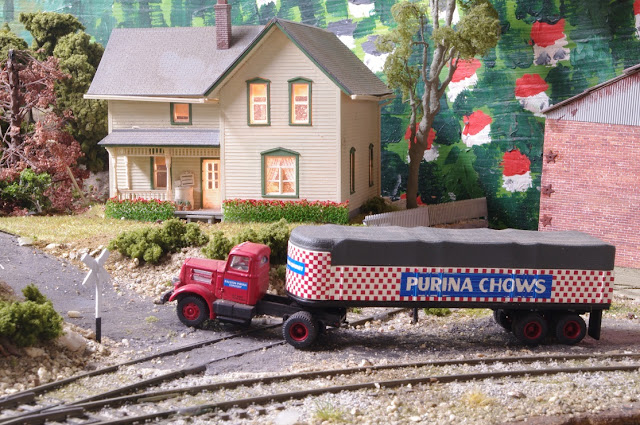Here's my CP Rail S-2 some years ago as an analog loco:
A new drop-in decoder would go in this loco. I was delighted that the eBay seller for the new AS6 got it in the mail right away, and although major retailers are shut down with quarantine, I got it in the mail within a few days.The PC board for the new AS6 is lettered "Rev 1".
One thing I discovered installing this new example of the AS6 was that the piece of plastic under the rear headlight LED is not a casting, it's a piece of foam. In this case, the foam was slightly dislodged in shipment, and I wondered if it was meant to be just a protective insert and not a permanent part of the decoder. So I removed it. Here's what the install looks like without the foam: However, when I re-mounted the hood and cab, it became clear that the black foam is intended as a light block, and without it, the rear LED lights up the whole cab: So I went back, retrieved the piece of foam, and reinstalled it: Here is how the foam light block works with the cab in place: I find that there are actually several variations on the early Atlas Alco switchers. This one is very smooth and quiet, with a skew wound armature. I think it's the best one of those I have, and I'm delighted TCS reissued the AS6. Again, the TCS AS6 install is fairly quick. The most time-consuming steps are cutting the tape to insulate the two frame halves and soldering the power leads from the trucks to the decoder board. Total time is probably less than 20 minutes.


